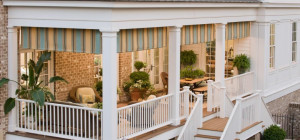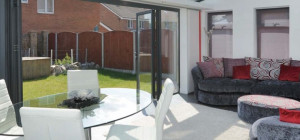Painting your property yourself (DIY) seems fun, as it transforms your space with your personal touch. From choosing colours and patterns to turning walls into a canvas and seeing beautiful results, it’s a hands-on adventure. Undoubtedly, DIY painting truly makes your home uniquely yours.
Since painting is an intricate job, one must be extra careful to avoid unpleasant mistakes.
So, what should you not do while painting? Let’s discuss common mistakes you should avoid when opting for DIY home painting.
Common painting mistakes: What should you not do while painting your property?
If you have chosen not to hire painting services and decided to paint your property yourself, take note of these mistakes that you may avoid making.
Mistake 1: Not preparing the wall surface thoroughly
In the excitement of splashing the colourful paint brush onto the wall, homeowners often forget to clean and prepare the wall surface before painting it. A wall covered with dirt and dust won’t let the paint stick to it properly. So, to ensure a flawless and long-lasting paint job, it’s important to prepare the wall well before starting the paint job.
Also, fill out any holes or cracks in the walls to ensure the surface is smooth and ready to be primed.
Mistake 2: Not priming the wall
Not priming the walls before painting them is a serious mistake. A primer is something that can make or break your paint job. It prepares the surface for paint adherence and creates a flawless finish. Also, a primer seals the wall surface and prevents stains from bleeding through the paint.
However, you should always discuss with a residential or commercial painting service provider about the type of primer you may need according to your wall conditions.
Mistake 3: Disregarding the weather
You cannot paint when it rains, even on your interior walls. Paint cannot handle extreme temperatures well, whether hot or cold. While extreme heat can make the paint crack or bubble, damp and cold weather will make it difficult to dry and stick on the wall for a long time.
Avoid making the mistake of painting your property in unfavourable weather conditions if you want the best and lasting outcomes. It’s recommended to paint your property in a dry and mild climate for the desired results.
Mistake 4: Not buying the correct rollers and brushes
Paint roller mistakes are common that most homeowners make. Using good quality and the right type of painting tools is crucial for a flawless finish. On the other hand, if you use inappropriate paint tools, it will make your painting job difficult, and you won’t achieve a smoother finish and waste paint as well.
The type of paint you choose to use to paint your walls will determine the type of brush you will need. For example, use natural-bristle brushes for painting your walls with oil-based paints. Further, nylon or polyester-based synthetic brushes should be used when working with water-based latex paint.
Also, make sure the paintbrush and rollers are clean and dust-free. Any debris stuck on the tool can show unevenness or leave marks when the paint dries.
Mistake 5: Not testing the paint beforehand
You may like a paint colour at first glance. However, some paint colours look entirely different once they are applied to a wall. It’s a good idea to get test paint pots and check the sample on your walls to determine if that’s the colour you want for your property.
Before you paint the entire walls, apply the samples on a small section of walls in different rooms. Since the light and size of each wall may vary, the same paint may appear different on different walls. Paint sampling will save you the headache and disappointment of choosing the wrong paint for your walls.
Mistake 6: Overbrushing
Just like there are right tools and paint for a perfect paint job, there are the right painting techniques as well. If you have ever seen a professional painter working, they don’t apply more than 3 or 4 strokes/rolls of paint on each wall section. That is because the paint on the surface starts to dry, and over brushing it can cause visible streaks and ridges.
If you want a smooth, professional finish, you must know when to stop and repaint a surface. The right technique is:
- Start from the top and work down.
- Apply paint with even, overlapping strokes.
- Avoid streaks and drips.
- Smooth out the edges to prevent visible brush marks.
- For large areas, use the “M” or “W” pattern for even coverage.
- Let the first coat dry before applying the next.
Mistake 7: Painting the ceilings last
Do not make the mistake of painting the ceilings after you have painted the walls. Painting the ceilings before the walls is a strategic move, as it prevents paint from dripping and spoiling your wall paint. This will consume your time and effort, making touch-ups necessary.
How to fix wall painting mistakes?
With the right approach, it is possible to fix paint mistakes. Here’s how:
- Identify the nature of the issue, whether it’s a drip, wrong colour choice, or uneven application.
- Take necessary actions immediately before the paint dries completely, for example:
- If it’s a drip, blotches or streaks, gently sand the dripped area once dry and repaint it. Smooth out the edges to blend perfectly with surrounding areas.
- To fix uneven coverage of colour or texture, apply an extra coat and ensure proper drying time between coats.
- If the colour isn’t what you expected, apply a new coat in the desired shade on a completely dry surface.
- Contact professionals if the mistake is too severe to be fixed on your own.
Conclusion
When DIY painting, mistakes are inevitable. Choosing the wrong paint and paint tools, not cleaning or priming the surface, and rushing through coats can ruin your paint job. However, by having prior knowledge of what you should not do while painting, you can prevent them easily. And if you do not want to get into all the hassle of DIY painting, it’s best to leave the job to professionals. They will paint your property using all the right tools, products and techniques, ensuring you a perfect finish that stays longer.







